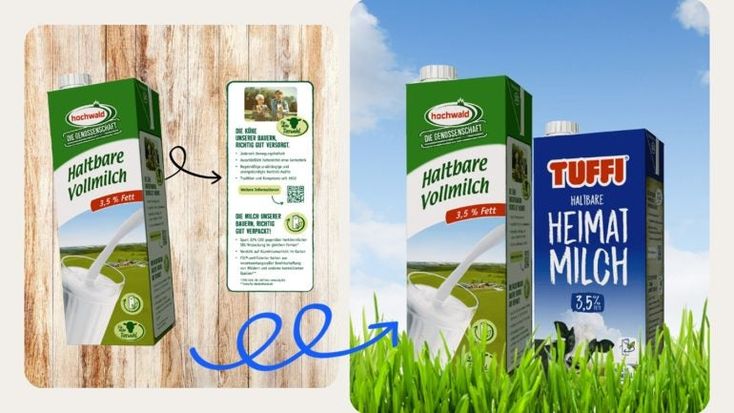25 June 2025 Germany- European dairy processor Hochwald has launched its UHT milk in SIG cartons without an aluminum layer. Using the packaging material SIG Terra Alu-free further reduces the already low carbon footprint of SIG standard packaging material by up to 34%, the company says.
SIG Terra Alu-free packaging material is made from up to 82% FSC-certified renewable paperboard, with ultra-thin polymer layers to protect food and beverage products over long periods of time, without the need for refrigeration.
Volker Kölsch, head of procurement at Hochwald, notes, “We’re committed to reducing carbon emissions by at least 50% within ten years, as we continuously strive to protect the environment. Our partnership with SIG is a building block in achieving this goal – by using SIG Terra Alu-free packaging material for our UHT milk products in SIG MidiBloc and SIG SlimlineBloc carton packs, the renewable share of the packaging is increased, and CO2e emissions are significantly reduced, as no aluminum layer is used.”
Both SIG and Hochwald have joined the Science Based Targets initiative (SBTi) and have their sustainability targets SBTi approved. This includes SIG’s commitment to reaching net-zero greenhouse gas emissions across its value chain.
Arla Foods began trialing aluminum-free caps and lightweight cartons for milk in 2022, while Lactalis expanded its renewable packaging lines in 2023 using bio-based polyethylene layers.
SIG leads the industry in its launch of a packaging material without an aluminum layer for aseptic carton packs and SIG customers have now filled more than 3.6 billion liters of food in alu layer-free aseptic cartons from SIG.
José Matthijsse, President & General Manager Europe at SIG said: “Our pioneering SIG Terra Alu-free solutions have created a benchmark in the industry, accelerating innovation on sustainability without compromising convenience. We have ambitious future plans for SIG Terra Alu-free options, which include developing a full barrier aseptic carton with at least 90% paper content, including closure, by 2030.”

